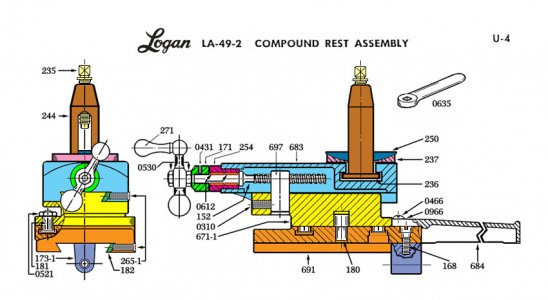- Joined
- Nov 5, 2010
- Messages
- 871
Finishing up my rebuild of a Logan 9B28-1 lathe. Finally got a good spindle from Joe at Plaza Machinery. So today is Assembly Day.
I note that there is no provision for oiling the spindle pulley where it rotates on the spindle when in back gear. Most lathes have a "set screw" oil port in one of the pulley grooves. This has none. I looked at drilling and tapping for one, but it can only go in the smallest pulley groove, and it sure looks thin there. Anyone else here done anything that works? Mjenks?
Also I am pressing the nose bearing on, and it sure is taking a lot of force. Bearing and spindle are both clean, and I polished the spindle surface to ensure smooth assembly. Right now it's got about an inch to go, and I don't want to Load it up more than I have been to get this far. Of course at this point I don't want to press it back off as there is no good way to press against the inner race in that direction.
Seems to me it pressed off very easily.
Right now it's sitting in the freezer. Hoping it shrinks enough to get finished. Any suggestion welcome
I note that there is no provision for oiling the spindle pulley where it rotates on the spindle when in back gear. Most lathes have a "set screw" oil port in one of the pulley grooves. This has none. I looked at drilling and tapping for one, but it can only go in the smallest pulley groove, and it sure looks thin there. Anyone else here done anything that works? Mjenks?
Also I am pressing the nose bearing on, and it sure is taking a lot of force. Bearing and spindle are both clean, and I polished the spindle surface to ensure smooth assembly. Right now it's got about an inch to go, and I don't want to Load it up more than I have been to get this far. Of course at this point I don't want to press it back off as there is no good way to press against the inner race in that direction.
Seems to me it pressed off very easily.
Right now it's sitting in the freezer. Hoping it shrinks enough to get finished. Any suggestion welcome
Last edited:


